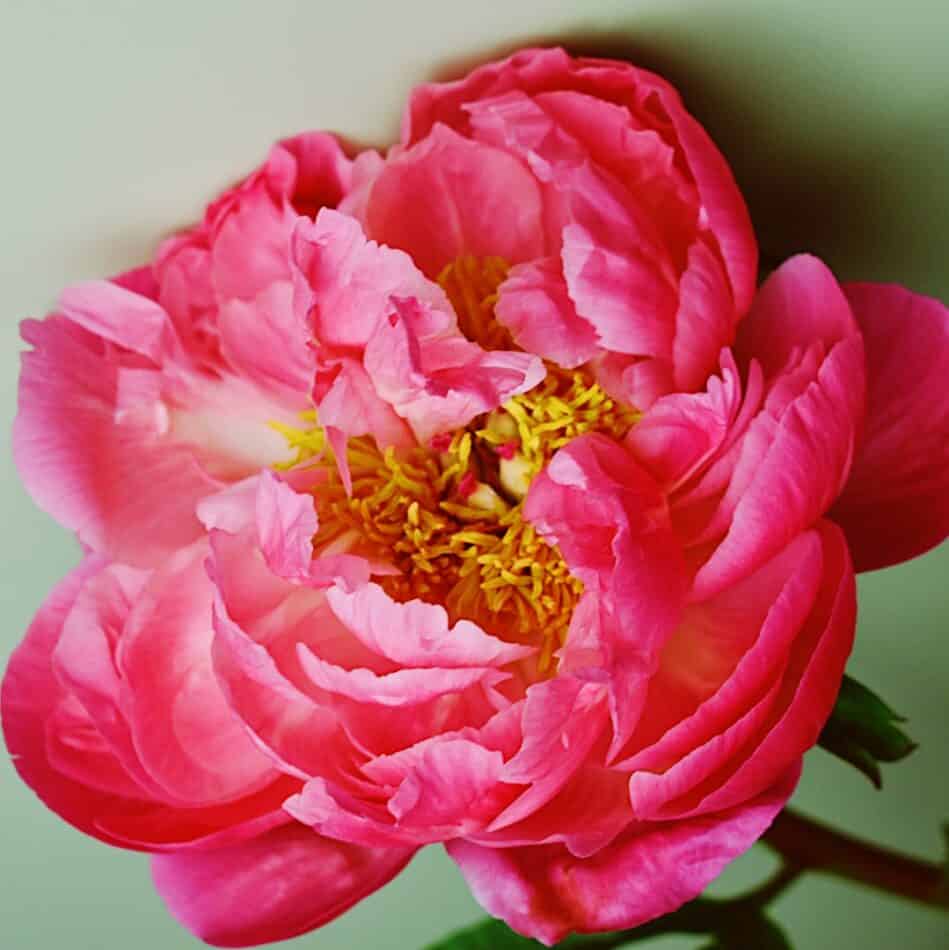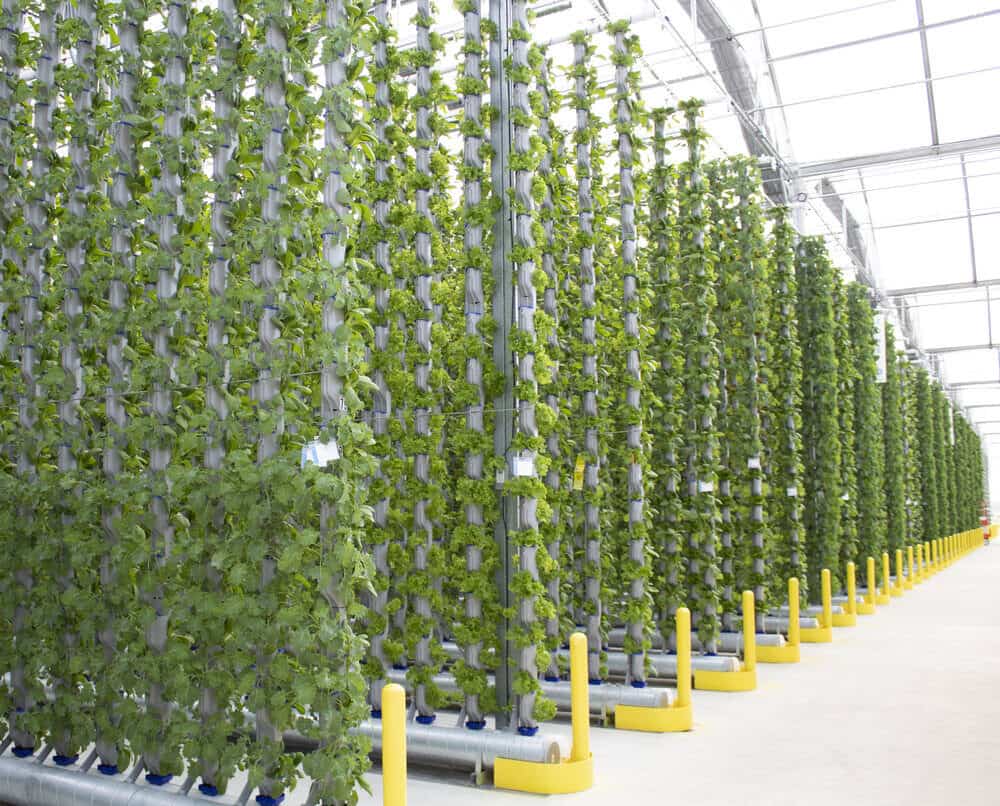Peonies have many great qualities that make them a springtime favorite – peonies are perennial, very fragrant, produce large blooms, are long-lasting cut flowers, low-maintenance, make ideal green foliage plants throughout the summer, and are easy to divide and transplant.
It’s hard to find anything negative about this spring beauty so if you have any outdoor planting space, use this guide to plant and grow peonies. You won’t regret it.

Choosing the right location
Peonies grow best in a sunny location and need at least 6-hours of sunlight every day. Soil that drains well is also vital to the health of peonies as soggy soil will cause the underground tubers to rot.
If you have established peonies that used to produce blooms but no longer bloom, it could be a lack of sunlight. Observe to see how much sunlight the plants are receiving every day. A tree or shrub may have grown up beside the plants and has now reached maturity and be blocking the sun from reaching them. If that’s the case, prune the tree or shrub or move the peonies to a sunnier location.

Planting Peonies
Incorporate 2-inches of compost into the soil before planting to increase fertility and improve drainage. Peonies are started from tubers.
Dig planting holes 2-inches deep and 18-inches apart. ]A tuber should only be planted 2-inches deep, if it’s planted deeper it will grow into a green shrub but not produce blooms.
One tuber will produce several stems and each year the tuber will multiply and quickly fill in the 18-inch space between plants. The tubers will need to be divided every 3-5 years.

Wait A Few Years
You must be patient with peonies. Don’t expect peonies to bloom the first year they are planted or transplanted.It takes at least 2-3 years for a newly planted or transplanted peony to bloom. Some peony varieties will take 7-years to bloom after planting or transplanting before they will produce fragrant blooms.
The plants will emerge from the soil in very early spring and look nothing like a peony. The leaves and stems will be red and furled into a tight coil. Each day the red furl will loosen and the plant will take on a familiar shape and green color. The fragrant blooms will appear in mid-spring and last for about a month.
Peonies are typically in full bloom when the heavy spring rains arrive and the downpours often beat the blooms off of the plants. The plants also like to sprawl out on the ground spring when they’re heavy with blooms and a plant support ring will help to keep the weak stems upright. Place a plant support ring (a.k.a peony ring) on top of each plant as soon as the new growth emerges from the soil. The new growth will grow up through the support ring and provide strength to the weak peony stems during a spring rain and bloom weight.
Remember that if the peony tuber was planted too deep, it won’t bloom. A peony tuber should only be planted 2 inches deep in well-drained soil.
Feed Often
Peonies are very heavy feeders. Early each spring, apply a low nitrogen plant food to the soil in a circle 6 inches away from the crown of the peony plant.
Apply a 2 inch layer of compost or mulch on top of the plant food. When peonies begin to bloom, feed them again in the same way. Feed once more in late summer so the tubers will have a good supply of stored food to sustain them through the winter.
Support System
If your peonies sprawl out on the ground (or get beat down by spring rains) and you want them to stand upright, use a plant support ring to keep the weak stems upright. Place a plant support ring on top of each peony as soon as the new growth emerges from the soil. The new growth will grow up through the support ring and provide support to the weak stems.
A wire tomato cage will also work as a support system to keep the plants upright.
Dividing And Transplanting
Peonies spread via underground tubers and will need to be divided and transplanted every 3-5 years to keep them healthy.
The best time to transplant peonies is in the fall. Observe your peonies while they are in bloom to determine if they are getting enough sunlight and have room to expand in their current location. If they are being shaded or crowded, it’s time to divide and transplant.
When the foliage begins to die back in the fall, dig up the entire plant. Dig at least 6 inches away from the plant in a circle and 6 inches under the plant so you won’t injure the tubers.
Gently brush off the soil from the roots and expose the tubers. Separate the little round, white tubers and transplant them into the new planting holes. The eye of the tuber should not be planted more than 2 inches below the soil surface. Plant in a full sun location in well-draining soil to which organic matter has been added.
Each little round white tuber will form a new peony plant. The smallest tubers are this year’s, and will not bloom for 3 years after transplanting. The larger the tuber is, the older it is and the quicker it will bloom.

Caring for your peonies
Peonies are very heavy feeders and will be fed before and after bloom time. The compost added to soil at planting time is sufficient food for the first year. The following spring applies a 2-inch layer of compost in a circle 6-inches away from the crown of the peony plant as soon as it emerges from the soil.
When the plant is 8-inches tall give it a fertile drink with water-soluble plant food. Follow that feeding with another 2-inch layer of compost at the end of the bloom cycle to provide food for the tuber.
Water plants only during times of drought.
Peonies make excellent long-lasting cut flowers, however, if you cut too many blooms off the same plant, it will reduce next years’ blooms. Don’t cut more than half of the blooms off the same plant and don’t remove any leafy stems.
If you are looking for other flowers to grow, why don’t you check our guide to plant perennials or violets
What we love from Amazon this week
Buy these wonderful flowers directly from Amazon:
















